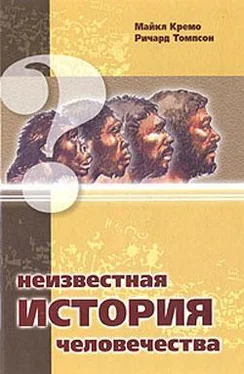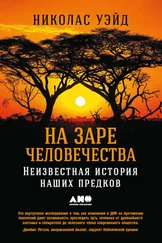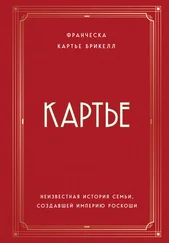Melleville, M. (1862b) Note sur un objet travaille de main d'homme trouve dans les lignites du Laonnois. Revue Archeologique. 5: 181–186. (*)
Merriam, J. C. (1938) The Published Papers of John Campbell Merriam. Vol. IV. Washington, D. C., Carnegie Institution.
Michels, J. W. (1973) Dating Methods in Archaeology. New York, Seminar Press.
Millar, Ronald (1972) The Piltdown Men. London, Victor Gollancz.
Miller, M. E., and Caccioli, W. (1986) The results of the New World Explorers Society Himalayan Yeti Expedition. Cryptozoology. 5: 81‑84.
Minshall, H. L. (1989) Buchanan Canyon: Ancient Human Presence in theAmericas. San Marcos, Slawson Communications.
Moir, J. R. (1916) Pre‑Boulder Clay man. Nature, 98: 109.
Moir, J. R. (1917a) A series of mineralized bone implements of a primitive type from below the base of the Red and Coralline Crags of Suffolk. Proceedingsof the Prehistoric Society of East Anglia, 2: 116–131.
Moir, J. R. (1917b) Apiece of humanly‑shaped wood from the Cromer Forest Bed. Man. 17: 172–173.
Moir. J. R. (1919) A few notes on the sub‑Crag flint implements. Proceedings ofthe Prehistoric Society of East Anglia, 3:158–161.
Moir, J. R. (1923) An early palaeolith from the glacial till at Sidestrand, Norfolk. The Antiquaries Journal, 3: 135–137.
Moir, J. R. (1924) Tertiary man in England. Natural History. 24: 637–654.
Moir, J. R. (1927) The Antiquity of Man in East Anglia. Cambridge, Cambridge University.
Moir, J. R. (1929) A remarkable object from beneath the Red Crag. Man, 29: 62‑65.
Moir, J. R. (1935) The age of the pre‑Crag flint implements. Journal of the RoyalAnthropological Institute, 65: 343–364.
Mongait, A. (1959) Archaeology in the U.S.S.R. Moscow, Foreign Languages Publishing House.
Morlan, R. E. (1986) Pleistocene archaeology in Old Crow Basin: a critical reappraisal. In Bryan, A. L… cd. New Evidence for the Pleistocene Peoplingof the Americas. Orono, Maine, Center for the Study of Early Man, pp. 27‑48.
Mozino, J. M. (1970) Noticias de Nulka: An Account of Nootka Sound in /792. Translated and edited by Iris Higbie Wilson. Seattle, University of Washington.
Napier, J. R. (1962) Fossil hand bones from Olduvai Gorge. Nature. 196: 400–411.
Napier, J. R. (1973) Bigfoot: The Yeti and Sasqualch in Myth and Reality. New York, Dutton.
Nelson, D. E., Vogel, J. S., Southon, J. R., and Brown, T. A. (1986) Accelerator radiocarbon dating at SFU. Radiocarbon 28: 215–222.
New York Times (1988) Fossil hands in S. African cave may upset ideas on evolution. May 6, p. A‑12.
New York Times News Service (1990) 17‑million‑year‑old leaf fossil yields strands of DNA. San Diego Union, April 12, p. A‑2.
Newell, N. D. (1959) Symposium on fifty years of paleontology. Adequacy of the fossil record. Journal of Paleontology, 33: 488–499.
Newton, E. T. (1895) On a human skull and limb‑bones found in the Paleolithic terrace‑gravel at Galley Hill, Kent. Quarterly Journal of the GeologicalSociety of London. 51: 505‑26.
Nilsson, T. (1983) The Pleistocene, Dordrecht, D. Reidel.
Noctling, F. (1894) On the occurrence of chipped flints in the Upper Miocene of Burma. Records of the Geological Survey of India. 27: 101–103.
Norris, R. M. (1976) Geology of California. New York, John Wiley.
О ' Connell, P. (1969) Science of Today and the Problems of Genesis. Hawthorne, Christian Book Club of America.
Oakley, K. P. (1954) Evidence of fire in South African cave deposits. Nature, 174. 261–262.
Oakley, К. Р. (1956) Fire as a Paleolithic tool and weapon. Proceedings of the Prehistoric Society, New Series, 21: 36‑48.
Oakley, К, P. (1957) The dating of the Broken Hill, Florisbad, and Saldanha skulls. /nClark, J. D., ed. Third Pan‑African Congress on Prehistory. London, Chatto and Windus, pp. 76‑79.
Oakley, K. P. (1958) Physical Anthropology in the British Museum. In Roberts, D. F., ed. The Scope of Physical Anthropology and Its Place in Academic Studies.New York, Wenner Gren Foundation for Anthropological Research, pp. 51‑54.
Oakley, K. P. (1961) Man the Toolmaker. London, British Museum (Natural History).
Oakley, K. P. (1974) Revised dating of the Kanjera hominids. Journal of HumanEvolution, 3: 257–258.
Oakley, К. Р. (1975)Areconsiderationofthedateof the Kanamjaw…/o«r/ta/o/ Archeological Science, 2: 151–152.
Oakley, К. Р. (1980) Relative dating of the fossil hominids of Europe. Bulletin ofthe British Museum (Natural History), Geology Series, 34(1): 1‑63.
Oakley, K. P., Campbell, В. G., and Molleson, T. I. (1975) Catalogue of FossilHominids. Part III. Americas, Asia, Australasia. London, British Museum.
Oakley, K. P., Campbell, B. G„and Molleson, T. I. (1977) Catalogue of FossilHominids. Part I. Africa, 2nd edition. London, British Museum.
Oakley, K. P., and Hoskins, C. R. (1950) New evidence on the antiquity of Piltdown man. Nature, 165: 379–382.
Oakley, K. P., and Montagu, M. F.A. (1949) A re‑consideration of the Galley Hill skeleton. Bulletin of the British Museum (Natural History), Geology 1(2)‑ 25‑46.
Obermaier, H. (1924) Fossil Man in Spain.New Haven, Yale University.
Ogden, J. G. (1977) The use and abuse of radiocarbon dating. Annals of the NewYork Academy of Sciences, 288: 167–173.
Okladinov, A. P., and Ragozin, L. A. (1984) The riddle of Ulalinka. SovietAnthropology and Archaeology, Summer 1984, pp. 3‑20.
Osborn, H. F. (1910) The Age of Mammals. New York, Macmillan.
Osborn, H. F. (1916) Men of the Old Stone Age. New York, Charles Scribner's Sons.
Osborn, H. F. (1921) The Pliocene man of Foxhall in EastAnglia. Natural History21: 565–576.
Osborn, H. F. (1927) Man Rises to Parnassus. London, Oxford University.
Osborn, H. F. (1928) Man Rises to Parnassus, 2nd edition. Princeton, Princeton University.
Oxnard, С. Е. (1968) A note on the fragmentary Sterkfontein scapula. American Journal of Physical Anthropology, 28: 213–217.
Oxnard, С. Е. (1972) Some African fossil foot bones: a note on the interpolation of fossils into a matrix of extant species. American Journal of PhysicalAnthropology 37: 3‑12.
Oxnard, С. Е. (1975а) Uniqueness and Diversity in Human Evolution. Chicago, University of Chicago.
Oxnard, С. Е. (1975b) The place of the australopithecines in human evolution: grounds for doubt? Nature. 258: 389–395.
Oxnard, С. Е. (1984) The Order of Man. New Haven, Yale University.
Patterson, В., and Howells, W. W. (1967) Hominid humeral fragment from Early Pleistocene of northwestern Kenya. Science, 156: 64‑66.
Patterson, L. W. (1983) Criteria for determining the attributes of man‑made lithics. Journal of Field Archaeology, 10: 297–307.
Patterson, L. W., Hoffman, L. V., Higginbotham, R. M., and Simpson, R. D. (1987) Analysis of lithic flakes at the Calico site, California. Journal of FieldArchaeology, 14: 91‑106.
Payen, L. (1982) Artifacts or geofacts: application of the Barnes test./n Taylor, R. Е., and Berger, R., eds. Peopling of the New World. Los Altos, Ballena Press, pp. 193–201.
Pei. J. (1980) An application of thermoluminescence dating to the cultural layers of Peking man site. Quatemaria Sinica, 5(1): 87‑95.
Читать дальше












